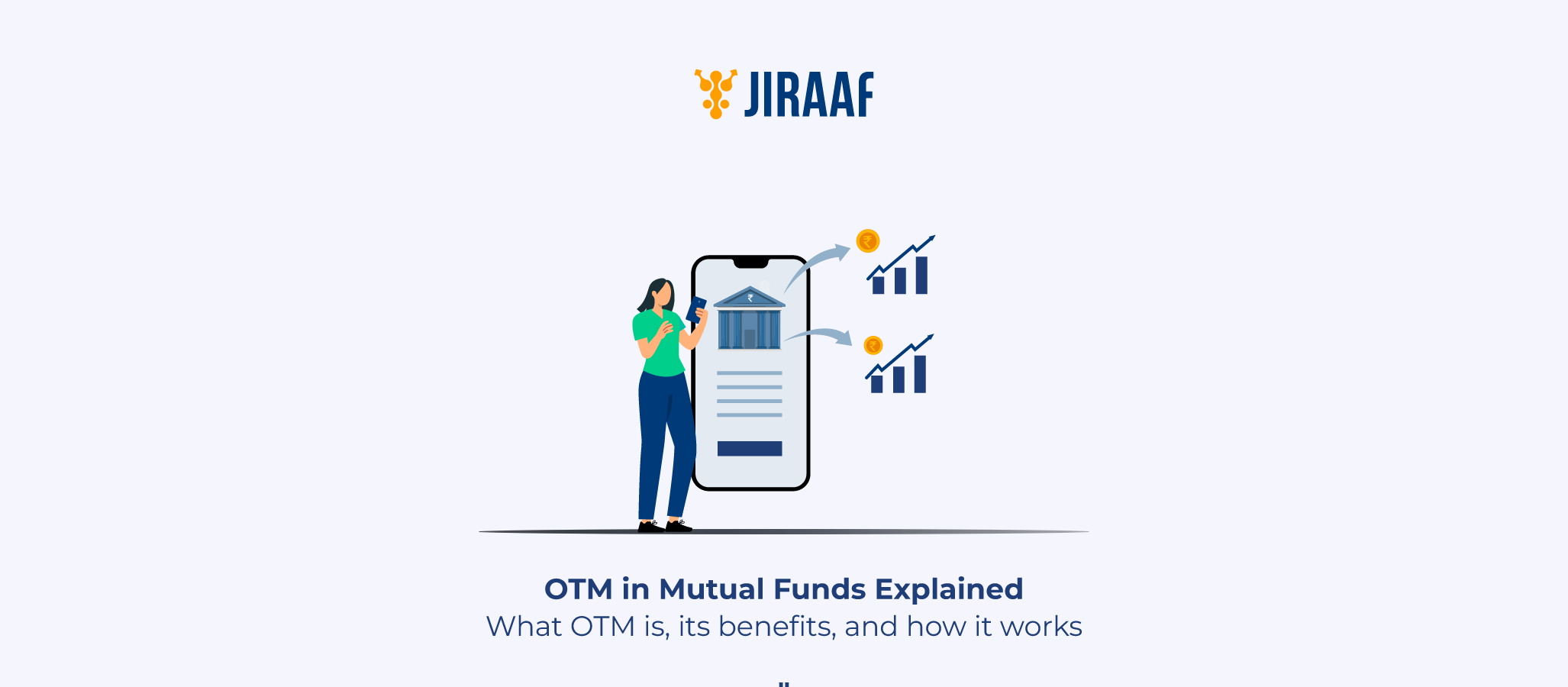One-time mandate (OTM) in mutual funds refers to the registration process whereby you give your bank permission to take a specific sum out of your savings account to buy units in a specific mutual fund scheme. The bank makes the debits in response to requests from the asset management company (AMC), which gets a transaction request. This mandate can be given for a specific amount of time (say, three years) or it can stay in effect until you withdraw it.
What Does OTM Mean in Mutual Funds?
The one-time mandate process helps you grant your bank authorization to make debits of a certain amount from your account as per the requests made by the mutual fund AMC. By automating routine investments, the OTM service facilitates your easy mutual fund investing. It operates in an electronic, paperless manner and saves you the effort of remembering your debit card or net banking details, adding a cheque, or transferring the payment through a payment gateway. The National Automated Clearing House (NACH) handles the processing of these debits. The money transfer from your bank to the systematic investment plan (SIP) will be automated as soon as you register for the OTM. This eliminates the inconvenience of occasionally moving money.
It is a practical method of making mutual fund investments and gradually building your wealth.
How Does OTM Work in SIPs?
The OTM is especially beneficial in SIPs where you are regularly investing a fixed amount of money. Let’s understand how OTM works in SIPs via a simple real-life example.
Let’s say you want to build your wealth over the long term with a mutual fund. You choose a SIP in an equity-oriented fund to invest ₹5,000 every month for ten years, and along with this, you set up an OTM online to ensure timely payments and to avoid missing a payment. Here’s what the process would look like:
- Set up the OTM: You navigate to the mutual fund scheme via whatever platform you have chosen and initiate an OTM for your SIP. In line with our example, you would choose the path where you will instruct your bank to transfer ₹5,000 from your linked account to the mutual fund on the first of every month for the next ten years.
- Automated SIP distributions: Once you have registered and completed the above steps, your bank will automatically debit the money, i.e, ₹5,000 on the first of each month and credit it to your mutual fund account. Thus, this becomes a very hassle-free, regular, and disciplined investing process.
- Maintaining sufficient funds: You must be fully aware that these payments are only going to regularly and successfully happen if your linked bank account has a sufficient balance; otherwise, the OTM can also fail and disrupt your investment.
Benefits of Using OTM for SIP Payments
The focal point of choosing an OTM for your investments is that it ensures that you don’t lose out on your monthly SIP contributions. Let’s discuss the benefits OTM has to offer:
- To begin with, you just need to sign up for the service once. Following a successful OTM registration, the money transfers will be carried out regularly and automatically.
- Second, registering is easy and only involves a few quick steps.
You can then be sure that the money transfer will be safe and that there won’t be many chances of a payment failure.
- You can register an unlimited number of SIPs under a single OTM. You must, however, ensure that the total value of all your SIPs falls within the designated range.
- OTM automates money transfers, which helps you reach your objectives and discipline your investments.
How to Register OTM in Mutual Funds
For an OTM, the registration procedure is straightforward. All you need to do is enter your bank account details and some personal information in the OTM form. Here’s how to sign up for OTM:
- Bank account information: Give your bank account information, including your bank’s name, branch, number, type, and IFSC code. One bank account must be used to register the OTM.
- Personal details: Enter your name, birthdate, PAN card number, address, phone number, email address, and any other relevant personal information. You must also include the information of any additional account holders if you have a shared bank account.
- Mandate limit: Indicate the maximum amount that may be taken out using the platform. Any transaction that goes over the selected limit will be denied.
- Investment details: After providing your account number, you can choose between two debit options: a one-time maximum amount for lump sum investments, or a fixed amount suitable for recurring investments like SIPs. You can also set the frequency of deductions – monthly, quarterly, half-yearly, or as per your preference.
- Signature: The OTM form must be signed by you, i.e., the bank account holder. The signatures on the OTM form and the ones in your bank records must match.
Conclusion
In conclusion, the OTM in mutual funds acts as a wingman in streamlining and simplifying your mutual fund investment process. This groundbreaking feature not only makes regular transactions an easier process but also cuts down the issues you could face while setting up your SIP and carrying it forward regularly, with discipline. By allowing you to automate your SIP payments through a simple one-time setup, OTM brings forward efficiency and simplicity. You also have the flexibility to start new investments and set up new SIPs seamlessly, especially with an evolving financial landscape where you need to take charge of where your money is going.
FAQs
What is OTM in mutual funds and how does it work?
OTM or one-time mandate in mutual funds refers to the process where investors give their bank authorization to debit money from their account as per the requests made by the mutual fund AMC. The process consists of setting up the OTM, like setting up the amounts and payment intervals, and then verification processes too.
Is there any limit on OTM mandate value?
No, there isn’t a set limit on OTM values in mutual funds that SEBI mandates. Banks or individual AMCs can set transaction limits, such as ₹1 lakh to ₹25 lakh per transaction. For precise limits, check with your bank or fund house. Each OTM comes with its specific mandate value; there is no general set limit for OTMs as a whole.
Is OTM registration mandatory for mutual fund SIPs?
No, SIPs aren’t necessary to register with OTM. Auto-debit requirements, or recurring payments, are commonly used by SIPs via NACH/ECS. Only lump-sum investments require OTM. However, if your SIP auto-debit keeps failing, some platforms could require a new OTM registration. For detailed needs, check with your fund house or RTA (CAMS/Karvy).
Can I cancel or modify my OTM mandate?
It is possible to cancel or even make changes to your OTM mandate at any point in time by notifying your linked bank where you hold your account. This guarantees that you maintain complete control over your funds even while your payments are automated.
Discover fixed income investments with Jiraaf, a SEBI registered online bonds platform that educates and brings access to a wide array of bonds. Sign up today to explore diversified fixed income investment opportunities to support your goal-based wealth creation journey. Start investing!



